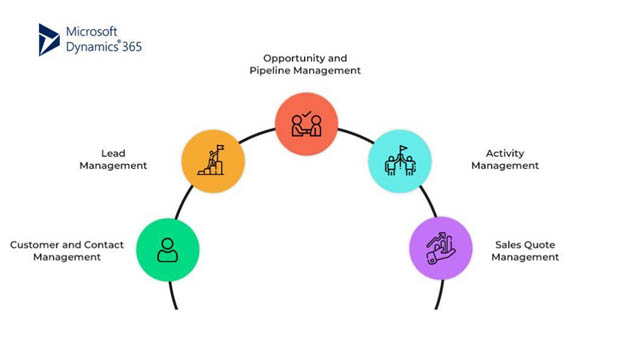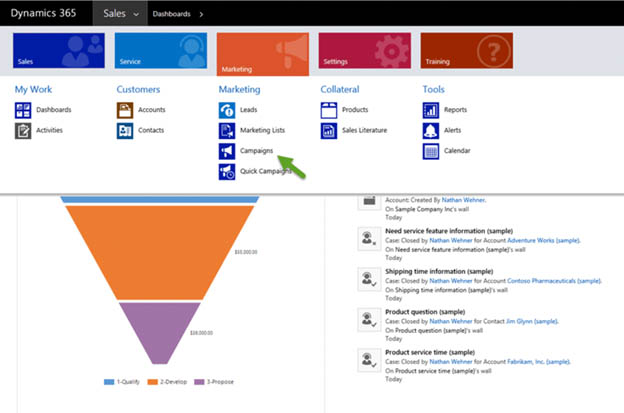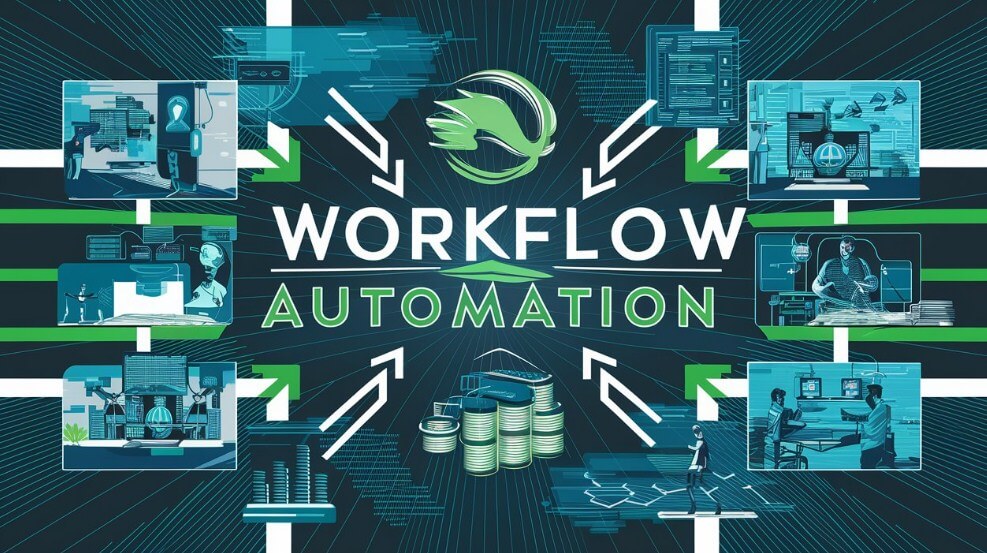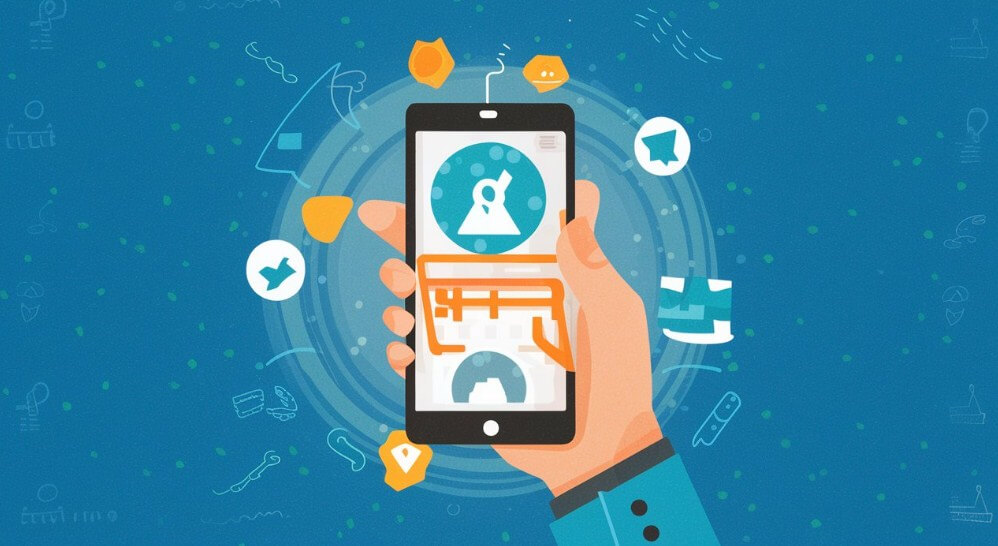Exploring Key Use Cases of Microsoft Dynamics CRM
1 Sales Pipeline Management

One of the primary use cases for Microsoft Dynamics CRM is sales pipeline management, empowering businesses to track and manage leads effectively.
Capturing and Qualifying Leads
Taking care of your sales flow begins by finding new people interested in what you offer. Dynamics CRM is awesome because it helps you pull in these interested folks from various places like online forms, ads, events, or even by putting their info in yourself.
This way, you won’t overlook any chance to make a sale.
Companies have the option to choose specific guidelines to decide which leads are ready based on information like who they are or how they act.
This makes it easier for salespeople to know who they should spend more time on, making sure they’re always working with the best potential customers.
Tracking Opportunities
Dynamics CRM gives everyone a single spot to keep an eye on all the sweet chances out there.
Sales individuals can watch how things are going, jot down thoughts and chats with customers, remember to check back in, and team up on tackling each chance.
Having this centralized information ensures a smooth, coordinated approach throughout the sales cycle.
Microsoft Integration
Dynamics CRM integrates tightly with other Microsoft productivity tools that sales teams use daily, like Outlook and Office. One can access and update CRM data directly from these familiar programs.
This streamlines workflows reduces duplicate data entry, and boosts overall productivity for the sales organization.
2 Customer Service and Support
Knowledge Base
Dynamics CRM helps companies create a big collection of helpful resources like articles, FAQs, and guides on fixing issues.
This means service agents always have up-to-date and correct info to help customers.
Additionally, this collection can be shared with customers directly through online self-help areas. This way, they can solve their problems without needing to reach out to an agent.
Self-Service Portals
To make things better for people who buy from them, companies can create special websites just for their customers.
On these sites, customers can ask for help, see where their help requests stand, find helpful information, and talk to other customers in forums.
Self-service options reduce the volume of requests for agents while empowering customers to help themselves.
360-Degree Customer View
Dynamics CRM gives agents everything they need to see about a customer in one spot. It shows the customer’s history, their case information, messages, and more.
This way of putting all the details together gets rid of any missing pieces and helps agents provide a service that’s tailored to each customer’s situation.
3 Marketing Campaign Management

Campaign Planning
Dynamics CRM makes it easier to plan and organize marketing activities, ensuring that they are effective. It enables marketers to create exact targets, target specific groups of individuals, and use resources efficiently.
This way, every move supports the broader business goals.
This structured, strategic approach sets campaigns up for success from the start.
Advanced Analytics
Companies may use Power BI, Azure, Machine Learning, and Dynamics CRM to uncover deep analytics, such as anticipating future trends.
This provides marketers with the tools they need to analyze massive amounts of data, uncover emerging patterns, group clients based on their traits, and predict their future behaviors.
These insights enable precision targeting and personalization that resonates better with audiences.
4 Lead Generation and Nurturing
Lead Capture
The first step is simply capturing new leads, and Dynamics CRM makes this easy across many sources – website forms, emails, social media, imported lists, and more. This centralized system ensures no potential prospects get missed.
Lead Scoring
Not all leads are equal, so Dynamics CRM enables businesses to score and prioritize them.
Scores are assigned based on the lead’s engagement, demographics, behaviors, and other criteria that identify high-value opportunities.
Sales can then focus their nurturing efforts on the most promising leads.
Lead generation and nurturing is a fundamental use case for Microsoft Dynamics CRM, helping businesses identify and convert prospects into customers.
Marketing Automation Integration
For additional nurturing power, Dynamics CRM integrates with marketing automation platforms.
This enables automating things like email campaigns, social monitoring, lead scoring updates, and more.
Automation ensures nurturing efforts are consistent and tailored to each prospect for maximum effectiveness.
Workflow automation is a powerful use case for Microsoft Dynamics CRM, streamlining processes and improving efficiency.
5 Relationship Management
360-Degree Customer View
At the core of relationship management is Dynamics CRM’s 360-degree customer profile. This centralized view contains all key customer information like:
- Contact details
- Purchase history
- Communication preferences
- Notes and documents from all interactions
Having this complete picture helps teams deeply understand each customer to deliver personalized experiences that build loyalty.
Relationship Tracking
Dynamics CRM tracks every interaction and touchpoint across the entire customer journey – from initial prospecting through to ongoing service and support after purchase.
No interaction details get lost, enabling seamless relationship management and a consistently positive end-to-end experience.
Engagement Automation
While personal relationship-building is important, Dynamics CRM also automates routine customer communications like:
- Follow-up emails
- Appointment reminders
- Satisfaction surveys
- Special promotions
Automating these touchpoints ensures consistent, timely engagement that nurtures relationships while freeing up staff for higher-value activities.
Collaboration Tools
Dynamics CRM’s integration with Microsoft’s collaboration tools like Office and Teams allows teams to easily share customer information and work together on accounts.
Simple collaboration features to keep everyone aligned to provide a unified, cohesive customer experience.
When businesses partner with a Microsoft Dynamics CRM development company, they gain access to tailored solutions that address their unique needs.
6 Analytics and Reporting
Interactive Dashboards
In Dynamics CRM, you can change your dashboard to quickly see the most important numbers and goals that matter to you.
These dashboards can be made just right for what each person or job needs, showing the information that’s top priority for them.
This makes it easy to monitor performance and quickly identify areas that need attention.
Data Visualization
Besides just dashboards, Dynamics CRM gives people tools like charts, graphs, maps, and more to look at their data.
These tools help easily spot patterns, trends, and details that might be hidden in big piles of data.
These visual tools also let you play around with the data in different ways to see new sides of things.
Advanced Analytics
For more powerful analysis, Dynamics CRM leverages Microsoft’s advanced analytics capabilities. This includes predictive analytics using techniques like:
- Machine learning models
- AI-driven predictions
- Forecasting algorithms
These advanced analytics can reveal insights not visible through traditional reporting to drive smarter decisions.
7 Workflow Automation
Process Automation
Manual tasks and approvals are a drag on productivity. Dynamics CRM lets businesses automate processes like:
- Data entry and updates
- Document generation and delivery
- Approval routing and notifications
By automating these repetitive workflows, employees avoid tedious tasks and accelerate process cycle times.
Event-Driven Automation
Automation in Dynamics CRM goes beyond just scheduled workflows. It also enables event-driven automation that gets triggered based on specific conditions or activities, such as:
- New lead or opportunity creation
- Case escalation or SLA breach
- Data change or update
This intelligent, context-aware automation ensures the right actions happen automatically at the right moments.
8 Collaboration and Communication
Collaborative Workspaces
For teams to work effectively together on accounts, opportunities, projects, and more, Dynamics CRM provides shared collaborative workspaces. These are secure spaces where team members can:
- Access and share up-to-date information
- Coordinate tasks and handoffs
- Discuss updates and next steps
- Share files, notes, and documents
Having these spaces ensures transparency, alignment, and seamless teamwork throughout all customer- and project-facing activities.
Real-Time Communication
In addition to the workspaces, Dynamics CRM also integrates with Microsoft’s real-time communication tools like Teams for:
- Video conferencing and virtual meetings
- Voice and instant messaging
- Screen and application sharing
- Virtual whiteboarding
These rich communication channels enable teams to easily get on the same page, resolve issues quickly, and move work forward more efficiently – regardless of location.
Document Collaboration
The integration with Office allows teams to collaboratively create, edit, and share important documents like:
- Sales proposals and contracts
- Project plans and deliverables
- Marketing and creative content
- Knowledge base articles
Using familiar Office apps with co-authoring and versioning control makes team document collaboration simple and secure within Dynamics CRM.
9 Microsoft Office Integration
Outlook Integration
For most customer-facing roles, email is mission-critical. Dynamics CRM’s tight integration with Outlook provides a “zero-entry” experience by:
- Automatically linking emails to CRM records
- Syncing contexts like contacts and opportunities
- Allowing users to view and update CRM data without switching apps
This ensures communications are tracked, and critical customer information is always visible – without disrupting existing email workflows.
Word Document Generation
Creating consistent, professional documents like proposals and quotes is a breeze using Word templates in Dynamics CRM. Users can:
- Auto-populate templates with CRM data
- Insert relevant product info and pricing
- Maintain version control and approvals
- Generate polished documents on demand
The Word integration eliminates copy-paste drudgery while ensuring brand and regulatory compliance.
Excel Data Analysis
Dynamics CRM’s connection with Excel unlocks advanced data analysis and reporting capabilities. Users can export CRM data into Excel to:
- Create rich visualizations like charts and dashboards
- Run advanced calculations and models
- Cross-reference against other data sources
- Perform what-if analysis and forecasting
Putting the power of Excel in users’ hands allows them to derive insights and make data-driven decisions using their existing skills.
10 Mobile Access
Dynamics CRM Mobile Apps
With CRM becoming a system of engagement, mobile access is essential. Dynamics CRM provides native mobile apps for:
- iOS
- Android
- Windows
These apps replicate the full CRM experience on smartphones and tablets so users stay productive on the go. Key capabilities include:
- Accessing account, lead, and case details
- Logging calls, notes, and activities
- Approving workflows and updating records
- Capturing signatures and photos
Offline Mobility
Many mobile scenarios require working without an internet connection. The Dynamics CRM mobile apps enable full offline access, allowing users to:
- View cached CRM data and updated stale records
- Create new records and log activities
- All changes automatically sync when reconnected
This ensures productivity isn’t disrupted and critical sales or service activities can continue even with no connectivity.
Adaptive Experiences
In addition to dedicated mobile apps, Dynamics CRM employs responsive design principles so the full web interface adapts fluidly across device types and screen sizes.
Key information is surfaced contextually, and experiences are optimized whether on a desktop, laptop, tablet, or smartphone.
So users get a productive, seamless experience no matter how they access the CRM.
11 Customization Flexibility
Custom Entities and Fields
Every business is unique with its own data structures, processes, and requirements. Dynamics CRM enables businesses to model their custom entities, fields, and relationships within the CRM itself.
For example, a manufacturing CRM company could create entities for Products, Inventory, Machine Maintenance, and more – specifying all the properties and interdependencies they need to track.
Programmatic Customization
For requirements that can’t be met through configuration alone, Dynamics CRM supports programmatic extensions and customization using:
- Code plugins and workflows
- JavaScript for UI and client scripting
- Web API integration and data access
This empowers developers and IT teams to tailor the system to precise needs and integrate it across the organizational technology stack.
12 Scalability and Growth
Cloud Scale and Flexibility
Microsoft Dynamics CRM is a cloud-first solution built on the highly scalable and globally available Microsoft Cloud. This allows businesses to:
- Rapidly provision new users and environments
- Dynamically scale storage and compute resources
- Access the latest product updates automatically
This cloud agility enables businesses to adapt quickly to changing needs and fluctuations in demand without costly infrastructure investment.
Hybrid and On-Prem Options
While the cloud offers many benefits, some businesses have requirements for on-premises deployment. Dynamics CRM supports hybrid scenarios with:
- On-premises servers synced to the cloud
- Cloud overflow for peak demands
- Phased cloud migration paths
There’s also the option for a fully on-premises installation to meet strict security, compliance, or operational policies.
13) Customer Feedback and Surveys
Feedback Collection
In today’s experience economy, understanding customer sentiment and needs is vital. Dynamics CRM provides simple tools to solicit customer feedback across key touchpoints like:
- After-sales or service interactions
- Product or service delivery
- Marketing campaigns and events
- Website and social channels
Surveys can be triggered at the right moments to maximize response rates when impressions are fresh.
Feedback Analysis and Action
Simply collecting feedback isn’t enough – teams need to analyze it and identify trends and areas for improvement. Visual survey reporting and sentiment analysis in Dynamics CRM allow teams to:
- Review feedback across channels
- Slice by customer segment or product
- Spot drivers of dissatisfaction
- Prioritize actions and investments
This closed-loop process of gathering feedback, analyzing it, and taking action fosters a customer-obsessed culture of continuous improvement.
FAQs
1) Which industries can use Microsoft Dynamics CRM?
Many different kinds of businesses like shops, factories, hospitals and clinics, banks and finance companies, real estate firms, and various professional services find Microsoft Dynamics CRM very helpful. It can be customized to fit the unique ways each industry operates.
2) How does Microsoft Dynamics CRM make customer service better?
With Microsoft Dynamics CRM, companies can quickly answer questions and solve problems.
They can talk to customers in a personal way and easily find all the information about them on phones or tablets.
It has special tools for handling customer cases, sharing helpful information easily, and using chatbots that make providing great customer service simpler across different ways of communication.
3) Can small businesses also use Microsoft Dynamics CRM?
Yes! Small businesses will find Microsoft Dynamics CRM a good choice because it can change as they need it to without costing too much money.
It has tools made just for small businesses that help bring all their customer info together in one spot plus help with automating jobs around the office, reaching out to new customers, and getting bigger as time goes on.






